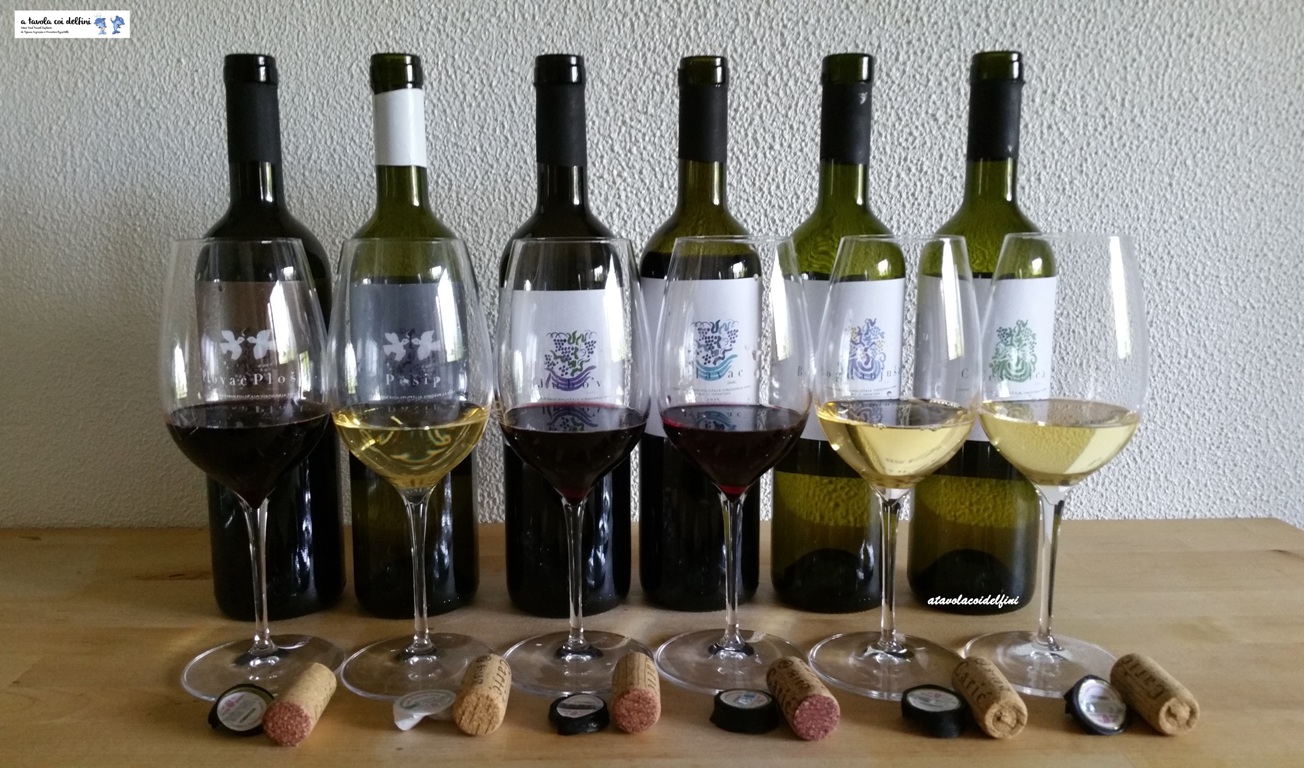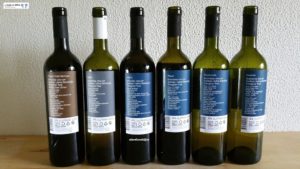Isole di erbe lussureggianti, selvatiche mediterranee, fichi e vigneti. La regione vinicola della Dalmazia è uno dei terroir e delle aree climatiche più straordinarie e diverse d’Europa. Il paese è diviso in 3 regioni principali: la penisola istriana nel nord confinante con l’Italia, la costa dalmata che si estende a sud e la grande area continentale ad est, nota come Slavonia. L’Istria è conosciuta per la varietà indigena della Malvasia bianca e il suo suolo rosso sangue (terra rossa) dove vengono prodotti i migliori vini rossi. La Dalmazia è la casa ancestrale dello Zinfandel della California, Crljenak Kaštelanski, insieme al conseguente Plavac Mali, la varietà rossa più coltivata in Croazia. I potenti vini Plavac contrastano fortemente con i vini spesso delicati della Slavonia, dove i campi di grano e i frutteti coprono le colline e il versatile Graševina con altre varietà beneficia delle fresche condizioni continentali
Islands of lush herbs, wild Mediterranean, fig trees and vineyards. The Dalmatian wine region is one of the most extraordinary and diverse terroirs and climatic areas in Europe. The country is divided into 3 main regions: the Istrian peninsula in the north bordering Italy, the Dalmatian coast extending to the south and the large continental area to the east, known as Slavonia. Istria is known for the indigenous variety of white Malvasia and its blood-red soil (red soil) where the best red wines are produced. Dalmatia is the ancestral home of the Zinfandel of California, Crljenak Kaštelanski, along with the consequent Plavac Mali, the most cultivated red variety in Croatia. The powerful Plavac wines strongly contrast with the often delicate wines of Slavonia, where the wheat fields and orchards cover the hills and the versatile Graševina with other varieties benefits from the cool continental conditions.
I vitigni di Hvar. La coltivazione dell’uva in Croazia, precedette i Romani di diverse centinaia di anni. La Graševina croata è conosciuta altrove come Welschriesling, la sua Frankovka come Blaufränkisch. Le foreste di querce croate in Slavonia sono sempre state una fonte di barili incantati. I rossi dalmati sono fatti da Plavac Mali.
The vines of Hvar. Grape cultivation in Croatia preceded the Romans by several hundred years. The Croatian Graševina is known elsewhere as Welschriesling, its Frankovka as Blaufränkisch. The Croatian oak forests in Slavonia have always been a source of enchanted barrels. Dalmatian reds are made by Plavac Mali.
La Cantina di Ivana Caric, sull’isola di Hvar, coltiva vigneti sulle pendici a picco sul mare, con interessanti escursioni termiche, vegetazione lussureggiante e un terroir prevalente di terra rossa. Coltivazione a basso alberello, patrimonio della viticoltura greca ben custodita. Circa 5 ettari di vigneti in diversi appezzamenti, 8 etichette per circa 30.000 bts, con prezzi da 5 a 20 € per bt.
The Ivana Caric winery, on the island of Hvar, cultivates vineyards on the slopes overlooking the sea, with interesting temperature ranges, lush vegetation and a prevalent red earth terroir. Low tree cultivation, heritage of well-guarded Greek viticulture. About 5 hectares of vineyards in different plots, 8 labels for about 30,000 bts, with prices from 5 to 20 € per bt.
Tasting: rossi
Plavac Polski Barrique 2012, 15% di alcol, PQWOC, vitigno Plavac Mali.
Rotondo e pieno in bocca, morbido e intenso, prugna, ciliegia marasca, cacao, legno prevalente.
Plavac 2015,14,30% di alcool, OC, varietà di uva Plavac Mali.
Sincero, vero, energico, esprime calore e struttura nel bicchiere, con una persistenza intensa, corroborante e profumata, che ricorda il vino del passato.
Jubo’v 2016, 14,5% di alcol, PQWOC, Cabernet Sauvignon, Merlot, Syrah, Plavac Mali.
Elegante, con ampia espressione e lettura, è un bland che spinge sulla componente speziata, pungente, tannica, vivace, stimolante. Timo, pepe, liquirizia, prugne rosse, il nostro preferito tra i 3 vini rossi.
Tasting: red
Plavac Polski Barrique 2012, 15% alcohol, PQWOC, grape variety Plavac Mali.
Round and full in the mouth, soft and intense, plum, marasca cherry, cocoa, prevailing wood.
Plavac 2015.14,30% of alcohol, OC, grape variety Plavac Mali.
Sincere, true, energetic, it expresses warmth and structure in the glass, with an intense, invigorating and perfumed persistence, reminiscent of the wine of the past.
Jubo’v 2016, 14.5% alcohol, PQWOC, Cabernet Sauvignon, Merlot, Syrah, Plavac Mali.
Elegant, with ample expression and reading, it is a bland that pushes on the spicy, pungent, tannic, lively, stimulating component. Thyme, pepper, licorice, red plums, our favorite among the 3 red wines.
Tasting: bianchi
Posip 2018, 13.5% alcol, QWOC, varietà Posip.
Elegante, minerale, naso ampio e persistente, aromatico, gran vino di carattere. Il nostro preferito fra i 3 bianchi, con interessanti abbinamenti gastronomici.
Bogdanjusa 2018, 12.5% alcol, PQWOC, varietà omonima indigena dell’isola.
Naso leggero, gelsomino, fiori bianchi, zagara, erbaceo, sembra un riesling vulcanico, minerale, fresco, sapido.
Cesarica 2018 13% alcol, QWOC, bland di Posip e Bogdonjusa.
Naso intenso, zagara, aromatico, palato meno complesso, vino piacevole e beverino da bere fresco 8°.
Tasting: withe
Posip 2018, 13.5% alcohol, QWOC, Posip variety.
Elegant, mineral, ample and persistent nose, aromatic, great wine of character. Our favorite among the 3 whites, with interesting food combinations.
Bogdanjusa 2018, 12.5% alcohol, PQWOC, the homonymous indigenous variety of the island.
Light nose, jasmine, white flowers, orange blossom, herbaceous, resembling a volcanic, mineral, fresh, sapid resling.
Cesarica 2018 13% alcohol, QWOC, bland from Posip and Bogdonjusa.
Intense nose, orange blossom, aromatic, less complex palate, pleasant wine and drinkable to drink fresh 8th.
La produzione dei vini Caric ci è piaciuta molto, per il rapporto qualità/prezzo e per la versatilità. La pratica enologica è molto rispettosa del prodotto, facilitata da una zona climatica con ventilazione favorevole, insieme a terreni drenanti. Hvar, isola affascinante e ottimi vini.
We enjoyed the production Caric wines for their quality/price ratio and versatility. The oenological practice is very respectful of the product, facilitated by a climatic zone with favorable ventilation, together with draining soils. Hvar, fascinating island and excellent wines.
Delfini Posippati 🙂



Sei super
Thanks for the marvelous posting! I quite enjoyed reading it, you may be
a great author. I will ensure that I bookmark your blog
and may come back in the future. I want to encourage you to continue your great work,
have a nice day!